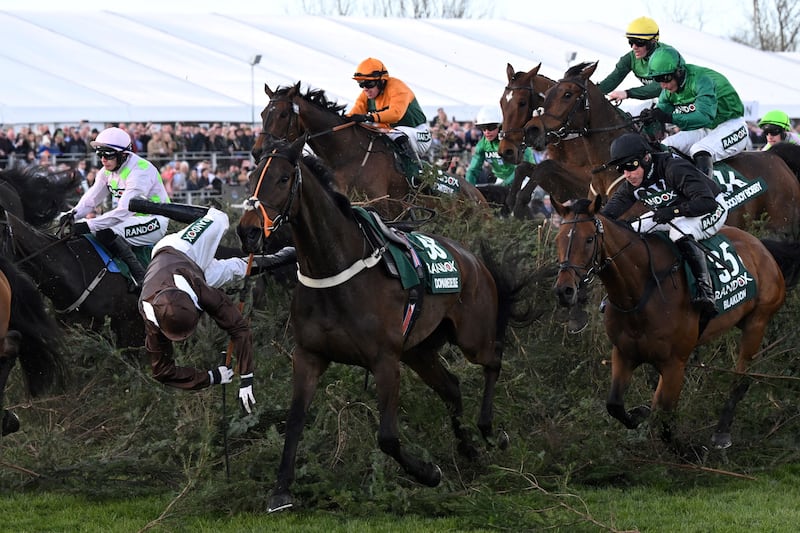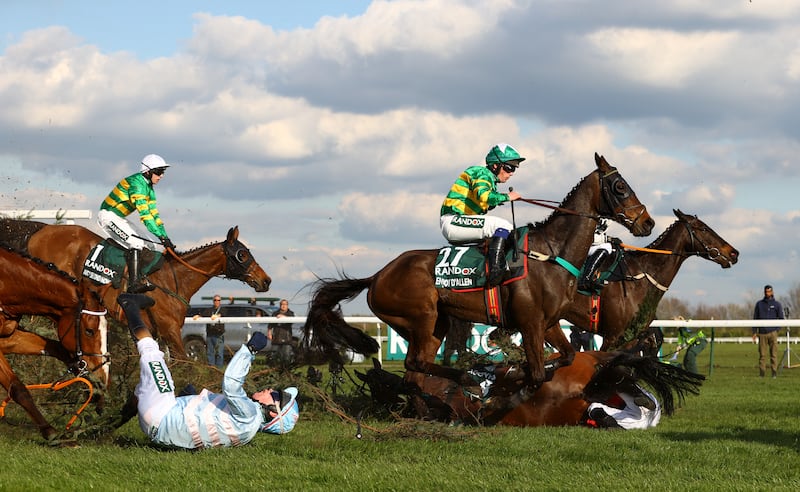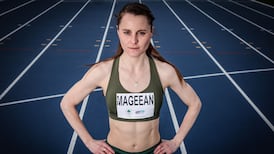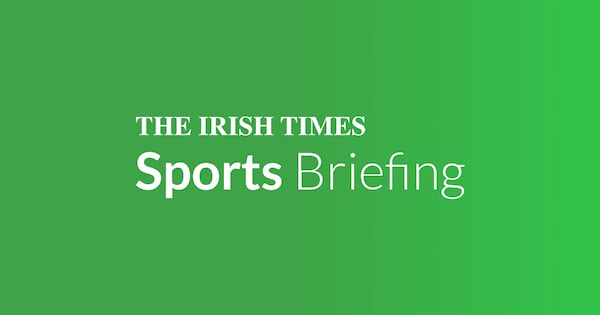The modern Grand National conundrum is how racing’s most famous race is sold on what it was rather than what it is. What it isn’t is the lottery that made it one of sport’s unmissable events. That was predicated on a level of risk that simply isn’t acceptable any more.
There’s a tale to be told on the back of such contradictory popular impulses. Where racing’s critics see carnage, others see thrills and spills. What spells indisputable bad news for racing, though, is how the public seem to be voting with their eyes when it comes to the National.
In the 1990s up to 16 million terrestrial TV viewers in Britain alone used to tune into Aintree for a once-a-year encounter with racing and an annual trip to the bookies. The National remains a priceless shop window for the sport. But viewing figures now are very different.
Last year they peaked at 6.1 million. That was down from 7.5 million in 2023. Nearly nine million watched Rachael Blackmore win on Minella Times in 2021. It was more than 10 million a decade ago. How people consume their sport now is unrecognisable even compared to then. There is greater competition for floating viewership. But the trend is stark.
READ MORE
Various excuses were floated last year, including how a 4pm start wasn’t as conducive to better figures as an evening slot might have been. Just how relevant that is might be judged by how tomorrow’s race is again off at four.
Other theories concern a lack of homespun feelgood stories to grab wider popular interest. The argument is too many runners in too few hands prevents popular engagement. That those hands are often Irish isn’t often baldly stated but it is implicitly understood to be a negative. That’s despite nobody ever backing a winner and quibbling with the payout due to nationality.

There may be some merit to such points. But the viewing figures suggest a more straightforward explanation might be that the great race is losing its appeal as a spectacle.
There were 32 runners last year in the race won by I Am Maximus. Twenty one of them finished. There wasn’t a single faller. All 21 finishers were in the camera frame between the final two fences. It was many things, but it wasn’t a National that tallied with popular imagination of the race.
That image was based on an unsustainable version of the National. Those massive fields jumping mountainous and sometimes unfair fences of the past produced a spectacle that meant every jump was a heart-in-mouth moment, and not always for the most edifying reasons.
It’s National Hunt racing’s central dilemma; the thrills come with spills and a small percentage of those will produce fatal injuries. Having the world tune in means that quandary comes under a spotlight that made maintaining any laissez-faire approach unworkable.
That makes examining motivations behind the National’s appeal a somewhat queasy exercise given how fallers were such a fundamental element to it. It always required an uncomfortable accommodation on the part of the viewer.
Just as awkward, though, is having to acknowledge how reducing the Aintree challenge through fence modifications looks to have hit popular interest.
Last year’s outcome was both ideal and incongruous. It begs the question that in adapting the National to modern welfare expectations, has the race lost its essential appeal?
The nature of every steeplechase is that incident and spectacle are always only a fence away. But the National was never just another steeplechase. It was different and recognised as such by far more than just those in the racing camp. That can’t really be said any more.
[ Mark Walsh has Triple Crown in his sights on National mount Perceval LegalloisOpens in new window ]
The fences look the same to once-a-year viewers. Becher’s Brook is still there, and The Chair, and the little Foinavaon obstacle that automatically recalls Michael O’Hehir’s evocative commentary from the ultimate pile-up in 1967. Except it’s obvious the fences are not the same.
The National is no longer an unparalleled test of horse and jockey. For better or worse it really can be viewed as another long-distance handicap chase. Any “Aintree factor” has essentially been lost. There was a time when a two-and-a-half-mile horse had a shot at winning because of the race’s unique jumping challenge slowed everything down. That has long since vanished.

Getting the balance right between preserving the Grand National’s status as a sporting must-see and maintaining broad public acceptance of not just the race itself, but of jump racing in general, was always going to be difficult.
The reality is that animal-based sports are under ever more scrutiny. There is an increasing element of the public getting ever more uneasy about the challenge put to thoroughbreds when racing over obstacles.
Maybe the nature of how modern media is consumed can explain some of the decline in the National’s viewing figures. Or that the public really do shy away from a sporting institution being dominated by an oligarch of powerful owners and trainers from Ireland.
The uncomfortable argument can also be made, however, that in reducing the Grand National’s risk, racing has diluted the very factor that made it so enthralling a prospect for so many for so long. What that says about the viewership more broadly is for another day.
Something for the Weekend
Ground conditions are never let get too quick for the National these days, but 19-degree temperatures mean mud-larks are up against it. Perceval Legallois (4.00) is a progressive type proven on summer ground and has the tactical pace to give jockey Mark Walsh options.
Going two miles on quick ground should fit the bill perfectly for Kalif De Berlais (5.00) in the Grade One novice chase following the National. He skipped Cheltenham and that call can pay off here against his main rivals that competed in the Arkle just over three weeks ago.















